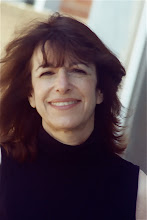The book is a feast for the eye and ears- a blend of witty, lucid storytelling:
"In Breslov, there lived a prince who had more than he wanted. When he was hungry for a slice of bread, he got a slice of cake dripping with honey. When he asked for a raisin, he was given a silver bowl of candied plums. When his eyes rested on a pony or a strudel or a bird's nest or a golden bowl, it was bundled up and brought to him before he even blinked."

and satirical, eye-popping illustrations.
Ann offers a fresh take on this well-known Yiddish parable, about a pampered prince who starts behaving like a rooster til he spends several days with a wise old man. (The sage acts like a rooster to gain the boy's trust.) Though children will be amused by the antics of the strutting, clucking pair, the folktale is much more than that. Ann has impressively re-visioned it as a coming of age story. The prince has a fit of roosterism- an extended, paralyzing tantrum- because he's been spoiled rotten. Only through acts of compassion- through the boy's concerns for the old man's comfort- is he able to grow and mature. A relevant story in this era of so many coddled, over-programmed kids....and a thought-provoking read for the upcoming Jewish holidays.
Today I have the pleasure of sharing an interview with Ann.
Why did you choose to retell this folktale?
I only retell stories that I truly love, and I have always loved the story of The Rooster Prince. It’s a hilarious, over the top slapstick tale with a wonderful message. The story has special relevance for me as a parent since not only is it a coming of age story that addresses what it means to become a good person, but it also deals with the way a parent or teacher can help raise a child to be adult who honors the values of compassion and kindness.
Broadly, how is your version different than the original? What elements did you flesh out or reinterpret?
The original original of this story, to the best of my knowledge, is attributed to Rabbi Nachman of Breslov. His is a very spare story that is interpreted as showing that a teacher of religion must meet the student at the student’s level – even if that is a very low level – in order to help the student climb to spiritual heights.
But of course, with the oral tradition, things change! And my grandmother’s version was, to my mind, very much a down to earth, immigrant’s story in reaction to the material riches available to American children, about how a child having “more than he wanted” does not necessarily lead either to happiness or to desirable, humane values.
And while the bones of the story belong to Rabbi Nachman and my grandmother, the imagery, rhythms, and the particular way the message is woven through, are mine.
What kind of research, if any, did you do for this book?
I read a lot of folklore and have studied the culture from which this story comes. But I think that, really, to write these stories well, the connection has to go beyond research. Even the best researched story in the world won’t come alive on the page unless the writer has a real emotional and with some stories spiritual connection to the tale.
You've retold several folktales. What are the rewards and challenges of writing in this genre?
Writers who retell folktales with their own spin face a bit of a paradox. Folktales come from an oral tradition that maintains its vibrancy, at least in part, as a result of the flexibility available to the teller in presenting a new and different version of the tale every time he or she tells it. Yet when we present the stories as books, we pin them down and trap them in a single, unchangeable form.
The writer’s job is to get the story right in a way that honors its roots and its cultural context but that also reflects the writer’s own creativity and values. When you get it right, there is a sense of having preserved a lively and important bit of the culture that produced the story. And because, in the case of The Rooster Prince, the culture in question is my own heritage, this is particularly gratifying.
If you were to interview the Rooster Prince, what questions might you ask him?
Well, if he were still a child, in the rooster state he’s in throughout much of the book, the only question to which I might expect a response would be something like, “So, uh, cock-a-doodle-doo? Buck buck buck, cluck cluck?” But if I were to meet him as the man he is on the last page, I might ask him if somewhere deep in his heart, there is a special place for the rooster he once was.
To learn more about Ann and her books, visit her website at annstampler.com.








No comments:
Post a Comment